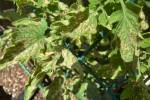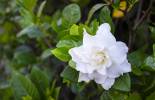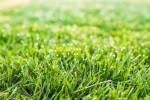Oleanders often get an undeserved bad rap
Here are some questions I encountered this past week with my answers.
Q: My homeowners association rule says I can't plant oleanders. Why is this so?
A: I find those who write the rules often go more on hearsay than finding out the facts. Yes, oleanders are poisonous, but so are many other plants in our yards.
People say oleanders cause many allergies, but oleander pollen is very heavy so it does not become airborne easily. Further, oleander leaves are coarse, causing them to trap the pollen. When the plant is disturbed, those pollens do fly and cause allergies. But the poor oleander takes more blame than it probably deserves.
While doing research when the health department was considering outlawing oleanders as pollen producers, I found the only people who died from oleander poison deliberately ingested it. The toxins are so repugnant, most people would immediately spit it out.
I often hear that oleanders were so bad, the Nevada Department of Transportation removed them from the freeway. Yes, they removed them, but they widened the freeway where the oleanders grew. When we did have oleanders along the freeway, their blooms certainly brightened my drive during the summer, and they didn't require much care.
Too many gardeners prune oleanders wrong. They remove new basil sprouts and never remove the older canes. This is opposite from what you are supposed to do. Remove a third of the old canes and save a few new sprouts. This allows more flowering wood to develop and you end up with blooms covering the entire plant, which hides those ugly canes.
Q: Is it safe to compost my oleander clippings?
A: Yes, according to researchers Libby Davison and Jimmy Tipton from the University of Arizona. They found "these results suggest that whatever phytotoxic compounds that may be present in eucalyptus or oleander were destroyed by composting."
Q: When do I prune my peach and apricot trees?
A: Prune them before buds show evidence of swelling. Peaches produce fruit on the previous year's wood, so be careful not to remove that wood to optimize fruit production. Apricots produce fruit on short spurs, so guard against removing them.
Q: When do I apply a pre-emergent herbicide to my vegetable garden?
A: If you apply it before planting your garden, the chemical will prevent vegetable seeds from sprouting. If you must apply an herbicide, do it after vegetables become established.
One of the real joys of gardening is controlling weeds. As you hoe, observe your vegetables with an eagle eye and you'll catch many of the problems in the bud. My wife weeds our yard often, and gets them before they have a chance to establish themselves.
Q: When do I prune back my frostbitten bougainvillea, lantana and honeysuckle canes?
A: We still have a few frosty nights ahead. Wait until mid-March to remove any darkened plant material. The damaged tissue insulates the plant's heart. As new growth appears, you'll know what to prune out even if it's down to the base of the plant. Your plants will come back quickly, because they have a strong root base.
Q: Where can I get cottonseed meal for my roses? Nurseries tell me it's unavailable.
A: It is becoming a scarce item and also more in demand. Gro-Well, 5441 E. Cheyenne Ave. (which was once Western Organics), sells the product. Their phone number is 639-0370.
Q: What tomato varieties are best for Las Vegas?
A: Some of the more prominent tomatoes are: Celebrity, Heat Wave, Heartland, Champion, Early Girl, Patio, Better Bush, Hawaiian, Roma and cherry tomatoes.
Q: How do I thin out pines?
A: When pines are thinned properly, they are beautiful. You are able to see the tree's interior structure that amplifies their beauty. The wind is able to sail through uninhibited and birds frequent them more often. Birds always make sure they have an escape route before entering plants.
What most people refer to as "thinning" becomes "lionstailing." The untrained gardener removes the interior growth, leaving the bulk of growth and added weight at the branch ends. This added stress often results in limb breakage during strong winds.
The International Society of Arboriculture, the organization that maintains certifications for arborists and tree workers, wants 80 percent of the work on trees to occur in the outermost 20 percent of the tree's canopy. Unfortunately, this is usually not the case. Now is the best time to prune our pines.
Linn Mills writes a garden column each Sunday. You can reach him at linn.mills@ springspreserve.org or call him at 822-7754.























